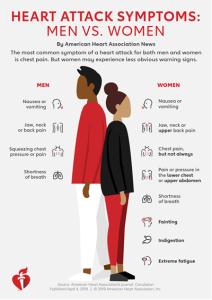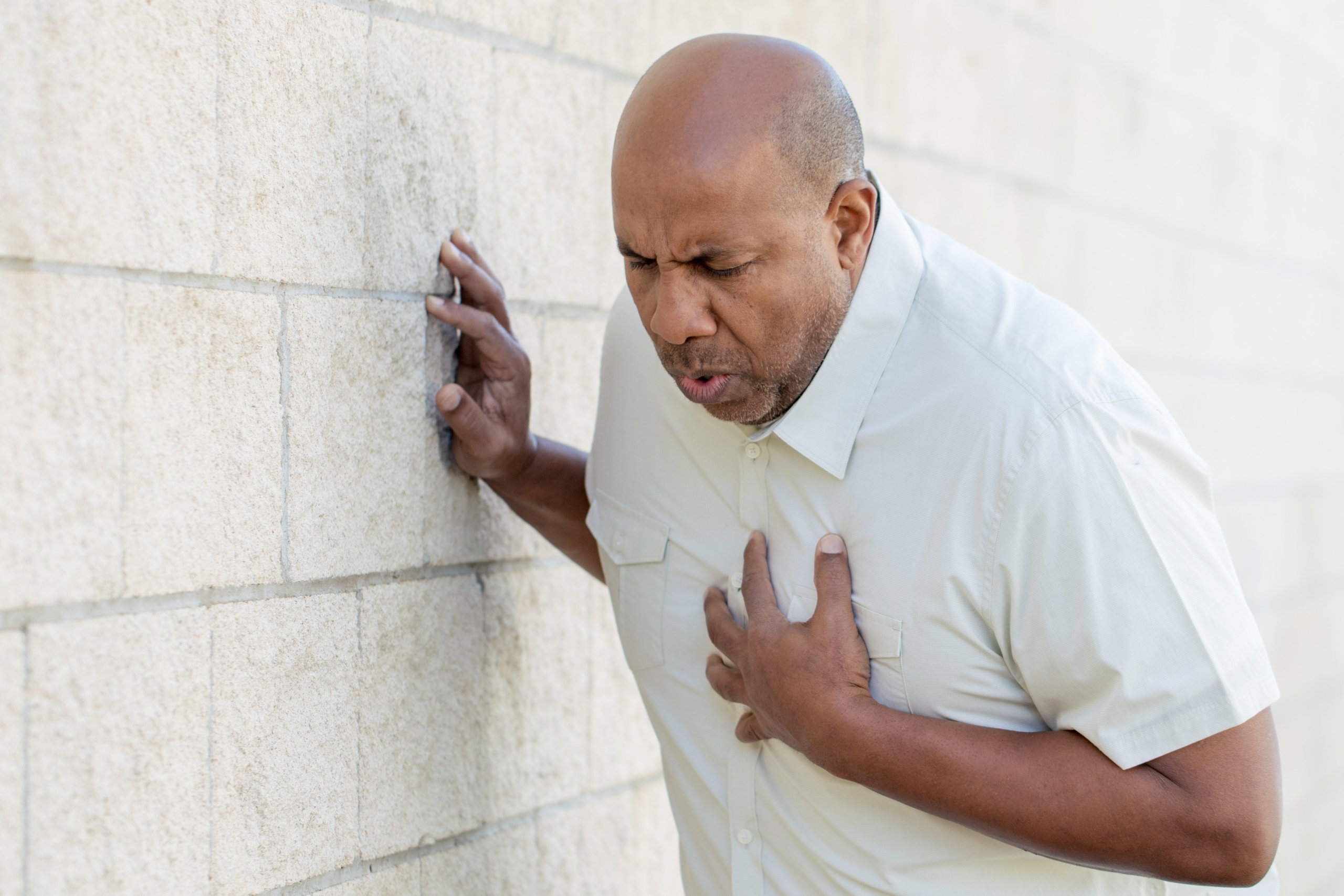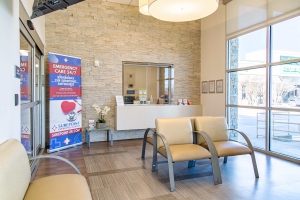Heart attack symptoms can vary from person to person. About 805,000 people in the United States have a heart attack each year due to restricted blood flow. A heart attack can strike suddenly without warning, or you may experience recurring symptoms for hours, days, or even weeks in advance.
Common symptoms and signs of a heart attack include:
- Chest Pain on the left side
- Pressure or pain in the middle of your chest that goes away and returns
- Tightness in the chest
- Pain that spreads throughout your upper body
- Cold sweat
- Fatigue
- Shortness of breath
- Nausea or lightheadedness
- Heartburn or abdominal pain
Should I Go To The ER For Chest Pain? 
Feeling aches or discomfort in your chest is a universal sensation that can affect anyone, regardless of their age, gender, or lifestyle. Sometimes, it might be due to minor problems like indigestion or muscle strain. However, it could also be a sign of something more serious, like a cardiac issue. It’s natural to feel worried and ask, “Should I go to the ER for chest pain?” To make the right decision, pay close attention to your symptoms. If they get worse or last for a while, it’s crucial to seek medical help immediately. Consider these four factors when deciding whether to visit the emergency room for chest pain:
- Persistent or Worsening Chest Pain: If your chest pain lingers or intensifies over time, don’t hesitate to head to the ER. This could indicate an evolving cardiovascular issue, such as a heart attack or angina, which requires urgent treatment.
- Chest Pain Accompanied by Other Severe Symptoms: If your chest pain is accompanied by shortness of breath, dizziness, nausea, sweating, or extreme fatigue, it’s crucial to seek immediate medical care. These additional symptoms can suggest a more critical situation, such as a heart attack or pulmonary embolism, which requires swift intervention.
- Chest Pain After Physical Activity: If you experience chest pain after engaging in physical activity, particularly if it’s sudden and intense, it’s vital to get checked out at the ER. This could be a sign of a heart problem, such as coronary artery disease or a heart attack.
- High-Risk Factors: Certain risk factors can increase your likelihood of developing severe heart or lung problems. If you have a history of smoking, high blood pressure, diabetes, obesity, or a family history of heart disease, it’s essential to take any chest pain seriously and seek medical attention without delay. Remember, your health should always come first. If you’re concerned about chest pain, don’t hesitate – trust your instincts. Visit a Surepoint emergency room or call 911 immediately.

What Should I Do During a Heart Attack?
If you notice any signs of a heart attack, acting quickly is crucial. Call 911 or your local Surepoint Emergency Center immediately. If possible, have someone drive you to the nearest emergency center. If your doctor has recommended it, you can take nitroglycerin or aspirin. These medications are designed to reduce heart damage and prevent blood clots. However, it’s important to understand that aspirin may not be suitable for everyone, especially when taken with certain medications. Consult your doctor beforehand to determine if aspirin is a safe option for you.
With an average of 5 minutes or less from door to doctor Surepoint Emergency Centers are paving the way for significant reductions in response times for Chest Pain events.
Surepoint Emergency Centers strive each day to continuously prioritize rapid response times for chest pain, ensuring that every second truly counts.
Surepoint Emergency Center is a modern emergency medical facility open 24/7. As an alternative to the traditional hospital ER experience, we offer convenience and minimal wait time, along with highly-trained emergency medical staff and state-of-the-art equipment.
Our top priority is bringing high-quality emergency care, quickly and easily to your family. We are committed to making patients feel better faster in a comforting and compassionate environment.
Expert convenient care in your neighborhood.[/vc_column_text][/vc_column][/vc_row]




